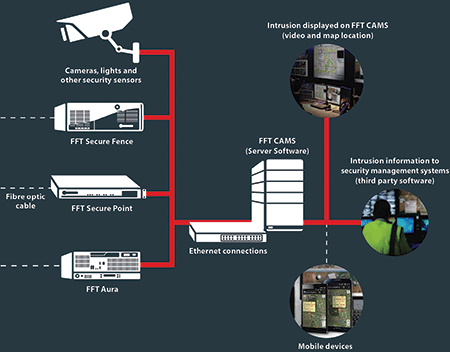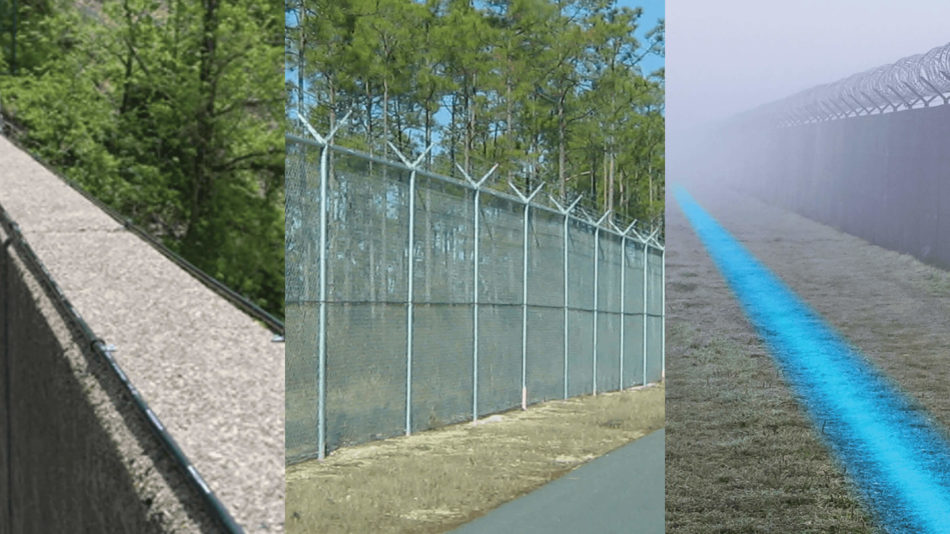Why Fiber Optic Security Equipments Are the Future of Security
The transition to fiber optic safety and security systems marks a considerable innovation in the realm of security, driven by their remarkable data transmission capabilities and resilience to outside interferences. As the landscape of safety advances along with emerging innovations such as AI and IoT, the capacity for fiber optics to improve and redefine security infrastructures ends up being progressively noticeable.
Benefits of Fiber Optic Equipments
One of the main advantages of fiber optic systems is their premium bandwidth capability, which promotes the transmission of big volumes of information over fars away without considerable loss. This characteristic is especially helpful for security applications that need the continuous surveillance and transfer of high-definition video clip feeds, sensing unit information, and various other essential information. Fiber optics can suit the expanding demands of modern-day security systems, making certain that data remains intact and reliable.
In addition, fiber optic wires are much less prone to electromagnetic interference, which can be a considerable issue in environments with various digital tools. This resistance improves the integrity of the information being transferred, consequently reducing the danger of information violations or system failings. Fiber optic systems are naturally much more protected than standard copper cable televisions, as touching right into a fiber optic line without detection is extremely challenging.
The longevity of fiber optic cables additionally contributes to their charm. They are immune to environmental elements such as moisture and temperature level changes, decreasing upkeep prices and boosting system durability. On the whole, these advantages placement fiber optic systems as a durable and efficient choice for contemporary safety and security facilities, guaranteeing reputable and protected data transmission.
Boosted Data Transmission Rate

The ability to send substantial amounts of data quickly promotes the seamless integration of high-def video feeds and advanced analytics. Protection systems can currently refine and assess details in real-time, boosting feedback times and situational recognition. Furthermore, fiber optic links support longer transmission distances without deterioration of signal quality, making them perfect for large security networks.
The raised speed of fiber optic systems not only improves the efficiency of safety and security operations however also lowers latency. This is especially vital in critical situations where prompt decision-making can protect against security breaches or reduce prospective risks. As organizations remain to focus on safety and security and performance, the need for fast and trusted information transmission will undoubtedly solidify fiber optic systems as a cornerstone of contemporary safety infrastructure.
Resistance to Interference
Fiber optic protection systems constantly show exceptional resistance to electro-magnetic disturbance, a crucial advantage in settings prone to electronic noise. Unlike conventional copper wires, which can be negatively impacted by magnetic fields, superhigh frequency interference, and other kinds of electrical disruption, fiber optic cables make use hop over to these guys of light to transmit information. This integral residential or commercial property ensures that the signals remain clear and unchanged, no matter surrounding digital task.
The usage of glass or plastic fibers in fiber optic technology develops a barrier against interference, permitting trustworthy data transmission even in challenging scenarios such as industrial centers, urban areas with high digital traffic, or locations near radio towers. This particular substantially reduces the chance of signal destruction or loss, making fiber optic systems particularly suitable for safety and security applications where honesty and precision of information are extremely important.
Furthermore, this resistance to disturbance boosts the total efficiency and reliability of safety and security systems, making certain that monitoring and alert systems right here function effortlessly. In a globe where safety and security is significantly threatened by sophisticated innovations, the durability of fiber optic systems sticks out as a pivotal function, strengthening their standing as an important part of contemporary protection infrastructure.
Cost-Effectiveness Over Time
Considerable price financial savings can be achieved with time with the execution of fiber optic security systems. While the preliminary financial investment might seem greater contrasted to traditional copper-based systems, the long-term financial benefits emerge with minimized functional and maintenance costs (fiber security). Fiber optic cables are inherently extra sturdy and much less susceptible to environmental elements, which equates to lower replacement and repair expenses over their life-span
Additionally, fiber optic systems call for much less power to operate, which further decreases energy expenses. Improved data transmission capacities enable less repeaters and amplifiers, lessening tools financial investment and simplifying setup procedures. The scalability of these systems also adds to cost-effectiveness, as companies can broaden their protection facilities without incurring significant added expenses.
Another element to take into over at this website consideration is the boosted efficiency in surveillance and reaction abilities that optical fiber give. Boosted real-time information transmission can cause quicker incident feedback times, possibly mitigating losses and liabilities connected with security breaches. Altogether, the long-term benefits of fiber optic protection systems not only warrant the preliminary expenditure however likewise position them as an economically sensible selection for organizations looking for durable security solutions.

Future Advancements in Safety And Security
Progressing modern technologies are established to change safety and security systems, incorporating synthetic intelligence (AI) and artificial intelligence to improve threat detection and feedback abilities. These technologies will enable security systems to analyze huge quantities of data in real-time, identifying patterns and anomalies that indicate potential threats. This proactive method will make it possible for faster decision-making and a lot more efficient case reactions.
In addition, the consolidation of the Net of Points (IoT) is leading the way for interconnected safety devices, providing extensive monitoring and monitoring. Smart sensors can communicate details regarding environmental modifications, while automated signals can alert safety and security personnel right away of dubious activities.
Furthermore, the evolution of biometric modern technologies will even more bolster protection devices. Face acknowledgment, finger print scanning, and retina recognition are coming to be extra advanced, offering layers of verification that are difficult to bypass.
Verdict
In verdict, fiber optic protection systems stand for a substantial innovation in protection innovation, offering exceptional information transmission rate, resistance to electromagnetic disturbance, and lasting cost-effectiveness. As the demand for innovative protection services remains to grow, the combination of fiber optics with emerging modern technologies such as AI, IoT, and biometrics will better enhance safety facilities (fiber security). The mix of these innovations will certainly make certain an extra safe and receptive environment, strengthening optical fiber as a cornerstone of future safety and security systems